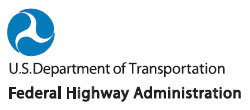HOT Lanes, Cool FactsWhat Are HOT Lanes?Traditional high-occupancy vehicle (HOV) lanes require passenger vehicles to have a minimum number of passengers. “HOT” lanes is short for “high-occupancy toll” lanes. HOT lanes are HOV lanes that allow vehicles that don’t meet occupancy requirements to pay a toll to use the lane. Variable pricing is used to manage the lane so that reliable performance is maintained at all times. HOT lanes have proven to be more efficient than traditional HOV lanes. In addition, in many cases the adjacent General Purpose lanes also benefit from the resulting reallocation of vehicles in the corridor. While communities may call them by different names, such as Fast Lanes or Express Lanes, the basic operation is the same—HOT lanes encourage carpooling and other transit alternatives while offering vehicles that do not meet standard occupancy requirements another option. What Are the Benefits of HOT Lanes?HOT lanes provide mobility options for individual drivers while encouraging the use of transit and carpooling. Tolls collected from HOT lanes can supplement the operations, enforcement and maintenance costs for the facilities. Even buses benefit from HOT lanes—research shows that communities with HOT lanes are often able to increase transit service as was the case with I-15 in San Diego. Solo drivers know they can count on getting where they need to be on time. For example, Minneapolis has increased the number of vehicles using the I-394 MnPASS lanes by 33 percent since the facility’s opening in 2005 without degrading transit and HOV use. Furthermore, travel speeds of 50 to 55 mph have been maintained for 95 percent of the time in the lanes. Denver originally projected 500 toll payers during the peak hour travel along I-25 but in fact achieved 1,400 in the first year of operation. Use of the I-25 HOT lanes has grown by almost 18 percent since the HOT lanes opened in 2006 and the lanes remain uncongested. Additionally, transit ridership in the HOT lanes has remained high. Why Charge Travelers for Using Roadways?By charging travelers for use of roadways, agencies can help mitigate traffic congestion while generating revenues to supplement operating costs. Common sense dictates that for a user to be willing to pay for a service, then he/she must benefit in some way from it. For priced facility users, this benefit is most likely travel-time savings or reliable travel. Often, a priced facility will offer a more reliable trip than an adjacent or nearby route. Drivers can choose to use the priced facility if they judge the travel-time savings worth paying the requisite toll. Do HOT Lanes Help the Environment?Like their HOV counterparts, HOT lanes have the potential to help improve air quality where they are implemented. High-occupancy lanes might help to reduce harmful impacts to the environment associated with congestion, especially by encouraging the use of multi-passenger vehicles or mass transit systems. On SR 167 in Seattle, general purpose lane speeds increased 10 percent and HOT lane speeds increased 7-8 percent and transit ridership increased 16 percent from the year before implementation of the HOT lane. As a result, the federal government allows HOV lanes to be considered a transportation control measure (TCM) for air quality conformity analysis. Why Are Variable Tolls Used for HOT Lanes?Congestion pricing, or “variable pricing,” changes the amount charged for road use based on demand. On a typical roadway, a flat toll would not be the optimal toll throughout the day. During off-peak periods it may be too high for drivers to benefit from paying it. Conversely, during times of peak demand, the toll may not be high enough to make optimal use of the facility. Variable pricing offers a solution to this problem by increasing the toll during periods of peak demand and reducing it during off-peak times. Who Is Implementing HOT Lanes?Communities around the nation are installing HOT lanes in response to increased congestion. There are 10 HOT lanes currently operating in eight states:
Where are HOT Lanes Operating?There are currently ten operating HOT lane projects for a total of over 100 miles in the U.S., and many states have projects in the planning stages. All of the operating projects were conversions of HOV lanes to HOT lanes, although some have extended the HOT lanes. The average length is approximately 12 miles. How are the Current Projects Operating?The operating projects are either one- or two-lane facilities in each direction. Most strive to maintain speeds of at least 45 miles per hour. The variable toll ranges from $0.25 in the off-peak to $9.00 in heavily congested periods. What does the Public Think about HOT Lanes?The operating projects enjoy support from both users and non-users. While most people don’t use the HOT lane every day, research shows that travelers like having a choice in their travel options. On I-25 in Denver, 62 percent of survey respondents say they use the Express Lanes because it saves time. Likewise in Houston, focus group respondents thought that using the HOT lane saved them as much as 50 percent of total commute travel time. Reliability is also often cited as a benefit of the HOT lane. In San Diego and Miami, users there want the projects expanded. For more information about implementing HOT lanes in your community, see the following resources:James ColyarTransportation Specialist Federal Highway Administration Office of Operations, HOTM 711 CAPITOL WAY S STE 501 Olympia WA 98501 Phone: (360) 753-9408 James.Colyar@dot.gov 
|
|
United States Department of Transportation - Federal Highway Administration |
||